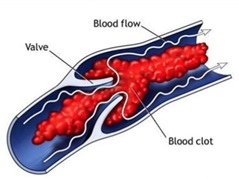Home > Research > Biomechanical and Clinical Research Studies > Thromboembolism Following Shoulder Arthroscopy: A Retrospective Review
Thromboembolism Following Shoulder Arthroscopy: A Retrospective Review

Arthroscopy of the shoulder is one of the most commonly performed orthopedic procedures with low associated risks. Venous thromboembolism (VTE) following shoulder arthroscopy is considered an uncommon complication, with fewer than 50 cases reported in the literature. While guidelines exist for thromboprophylaxis in major orthopedic surgeries such as total hip arthroplasty and total knee arthroplasty, there are no clear guidelines for upper extremity in the United States. There is some evidence that the rate of VTE following shoulder arthroplasty may be comparable to arthroplasty of the hip and knee. Even with the incidence of VTE following shoulder arthroscopy being low, it is still present and poses a serious potential risk, especially when no clear guidelines for thromboprophylaxis exist. The purpose of this multicenter study was to identify potential risk factors for the development of VTE following shoulder arthroscopy and to determine the overall incidence of this complication. Among multiple surgeons, a case-control review was performed to determine the incidence of VTE following shoulder arthroscopy. An analysis was used to identify any potential risk factors for the development of VTE following shoulder arthroscopy. The results of this study show that although rare, VTE occurs following shoulder arthroscopy at a rate of 0.15%. Twenty two cases of symptomatic VTE were identified amid 15,033 shoulder arthroscopy cases. All cases were preformed in the beach-chair position. The variables analyzed in the cases of VTE compared with the control cases did not identify any significant risk factors. The rate of VTE is lower than observed in hip and knee surgery.
< Back to Biomechanical Research Studies List


